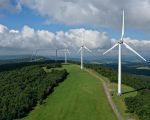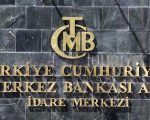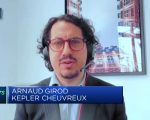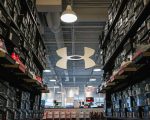U.S. Federal Reserve Board Chairman Jerome Powell speaks during a news conference following a meeting of the Federal Open Market Committee (FOMC) at the headquarters of the Federal Reserve on June 14, 2023 in Washington, DC.
Drew Angerer | Getty Images News | Getty Images
Central banks are at “the end of the beginning” in their battle against inflation, as several factors keep core prices persistently high, according to top Societe Generale economist Kokou Agbo-Bloua.
Markets are eagerly awaiting key inflation prints from the U.S. later this week, with the core annual consumer price index (CPI) — which excludes volatile food and energy prices — remaining persistently high to date, despite the headline figure gradually edging closer to the Federal Reserve‘s 2% target.
The persistence of labor market tightness and the apparent resilience of the economy means the market is pricing around a more-than 90% chance that the Fed will hike interest rates to a range of between 5.25% and 5.5% at its meeting later this month, according to CME Group’s FedWatch tool.
U.S. inflation cooled in May to an annual 4%, its lowest annual rate in more than two years, but core inflation rose by 0.4% month-on-month and 5.3% year-on-year.
In assessing the current state of global policymakers’ efforts to tame inflation, Agbo-Bloua quoted former British Prime Minister Winston Churchill’s remarks in a 1942 speech: “Now this is not the end. It is not even the beginning of the end. But it is, perhaps, the end of the beginning.”
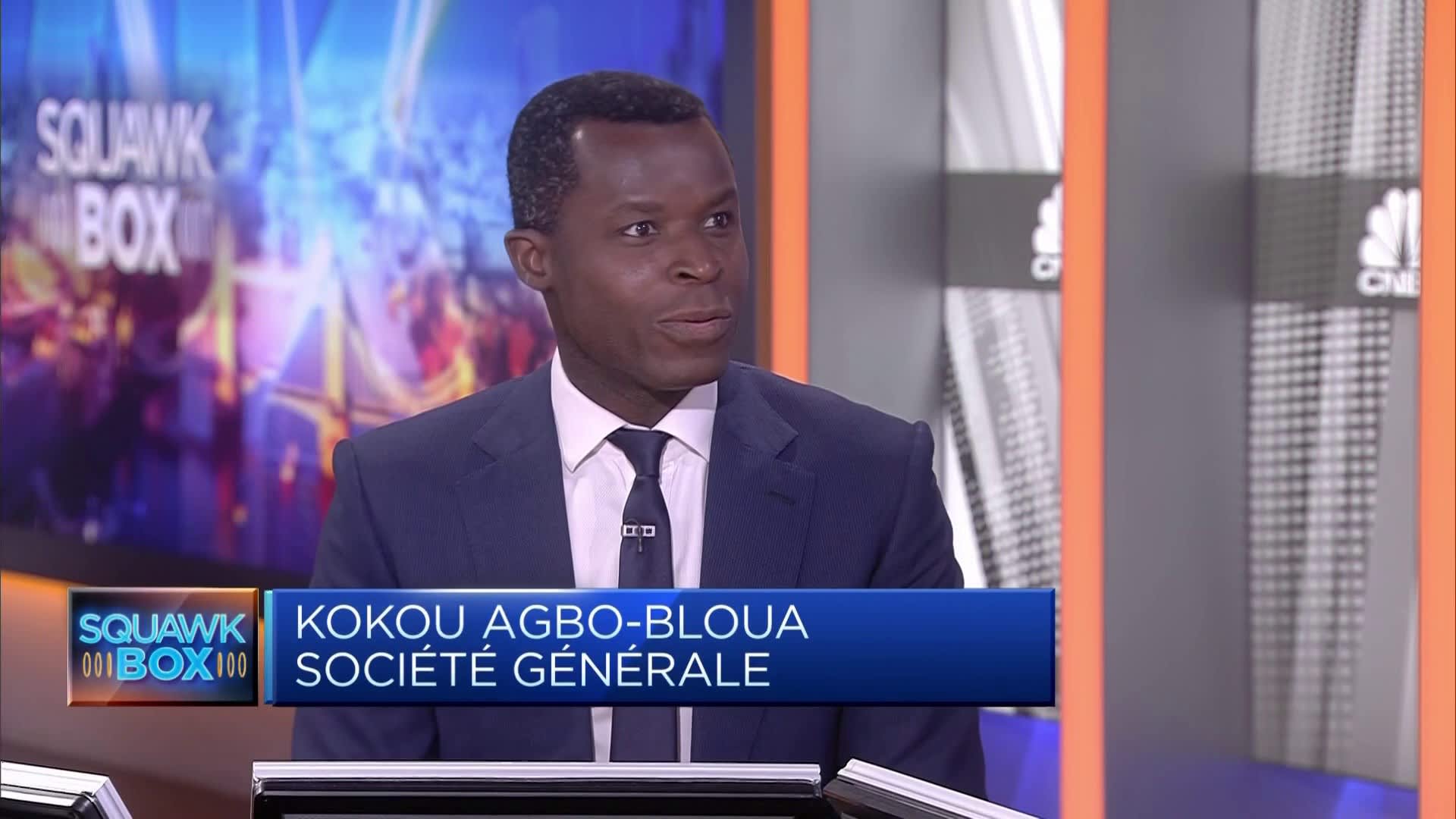
“The number one ‘original sin,’ so to speak, is that governments have spent a huge amount of money to maintain the economy that was put in hibernation to save human lives, so we’re talking roughly 10-15% of GDP,” Agbo-Bloua, global head of economics, cross-asset and quant research at Societe Generale, told CNBC.
“The second point — obviously you had the war in Ukraine, you had the supply chain disruptions — but then you also had this massive buildup in excess savings plus ‘greedflation,’ so companies’ ability to raise prices by more than is warranted, and this is why we see profit margins at record levels over the past 10 years.”
Companies have developed a “natural immunity” against interest rates, Agbo-Bloua argued, since they have been able to refinance their balance sheets and pass higher input prices on to consumers, who are now expecting higher prices for goods and services.
“Last but not least, the labor market is super tight and you have lower labor productivity growth which now is pushing unit labor costs and you get this negative spiral of wage prices,” he said.
“The central banks need to trigger a recession to force unemployment to pick up and create enough demand destruction, but we’re not there yet.”
The impact of monetary policy tightening often lags the real economy by around three to five quarters, Agbo-Bloua said. But he highlighted that the excess savings built up during the pandemic created an additional buffer for consumers and households, while companies were able to repair balance sheets. He suggested that this has helped to keep the labor market resilient, which will likely extend this lag time.
Inducing a recession
In order to maintain credibility, Agbo-Bloua therefore said central banks — and in particular the Fed — will need to keep raising interest rates until they induce a recession.
“We think that the recession or slowdown should occur in the U.S. in Q1 of next year because we think the cumulative tightening is ultimately going to have its effects, it’s not disappearing,” he said.
“Then in Europe, we don’t see a recession in the euro area, because we see demand 2 to 3 percentage points above supply, and therefore we see more of a slowdown but not recession.”
In terms of where the recession in the U.S. will begin to take hold, he suggested it will most likely “creep into corporate profit margins” that are still lingering near record levels, through the “wage growth phenomenon that is essentially going to eat into earnings.”
“The second point is that consumer spending patterns will also slow down, so we think it is a combination of all of these factors that should eventually drive a slowdown,” he added.
“Then again, if you look at the current path of interest rates, it seems like we might see more tightening before this is likely to occur.”
‘Recession postponed, but not canceled’
This sentiment was echoed by Nathan Thooft, co-head of global asset allocation at Manulife Asset Management, who said while economies had a better start to 2023 than expected and have so far mostly avoided a technical recession, this is more a case of the recession being “postponed rather than canceled.”
“The tightening of credit conditions and the slowdown in lending suggest that we’ve so far managed to delay the impending recession as opposed to averting it altogether,” Thooft said in the asset manager’s mid-year outlook on Friday.
“However, whether a recession actually takes [place] is far less relevant than how long we could be stuck in a period of below-trend GDP growth.”
He suggested that with global growth expected to settle at around 2.5% this year and next, below the 3% threshold that would herald a global recession if breached.
“If forecasts are correct, it means that global GDP growth would come in 15.2% below trend, a scenario last seen during the pandemic in 2020 and, before that, in the 1940s.”

